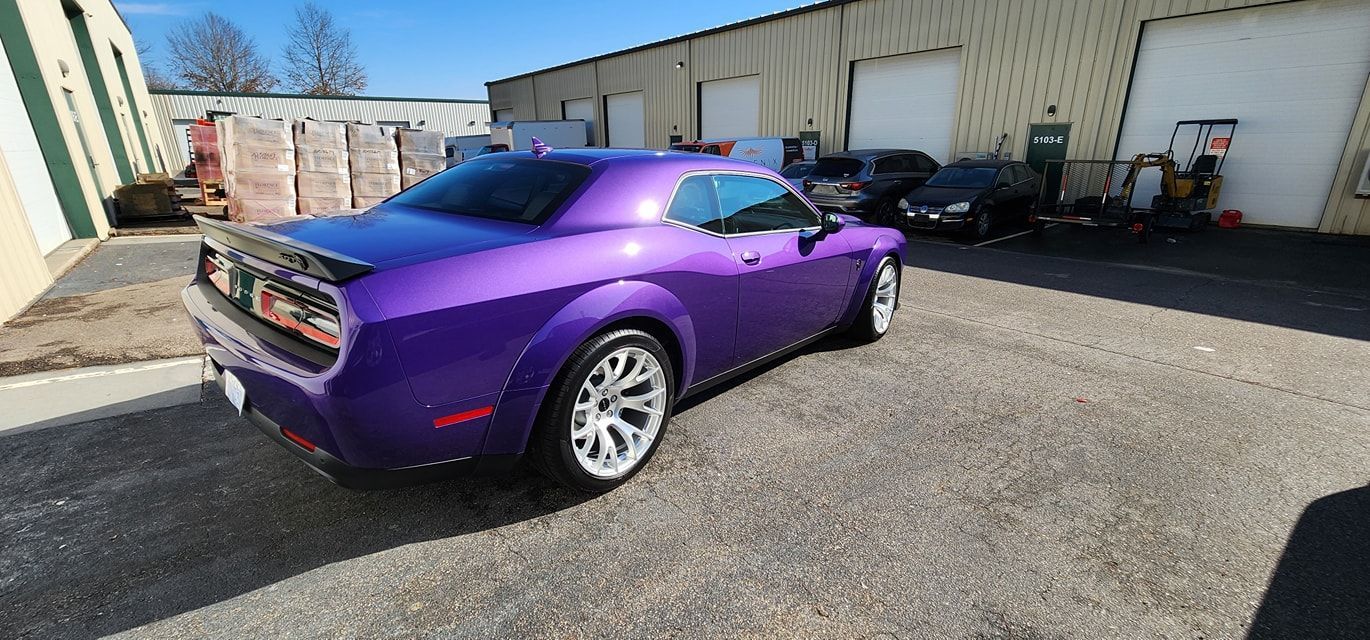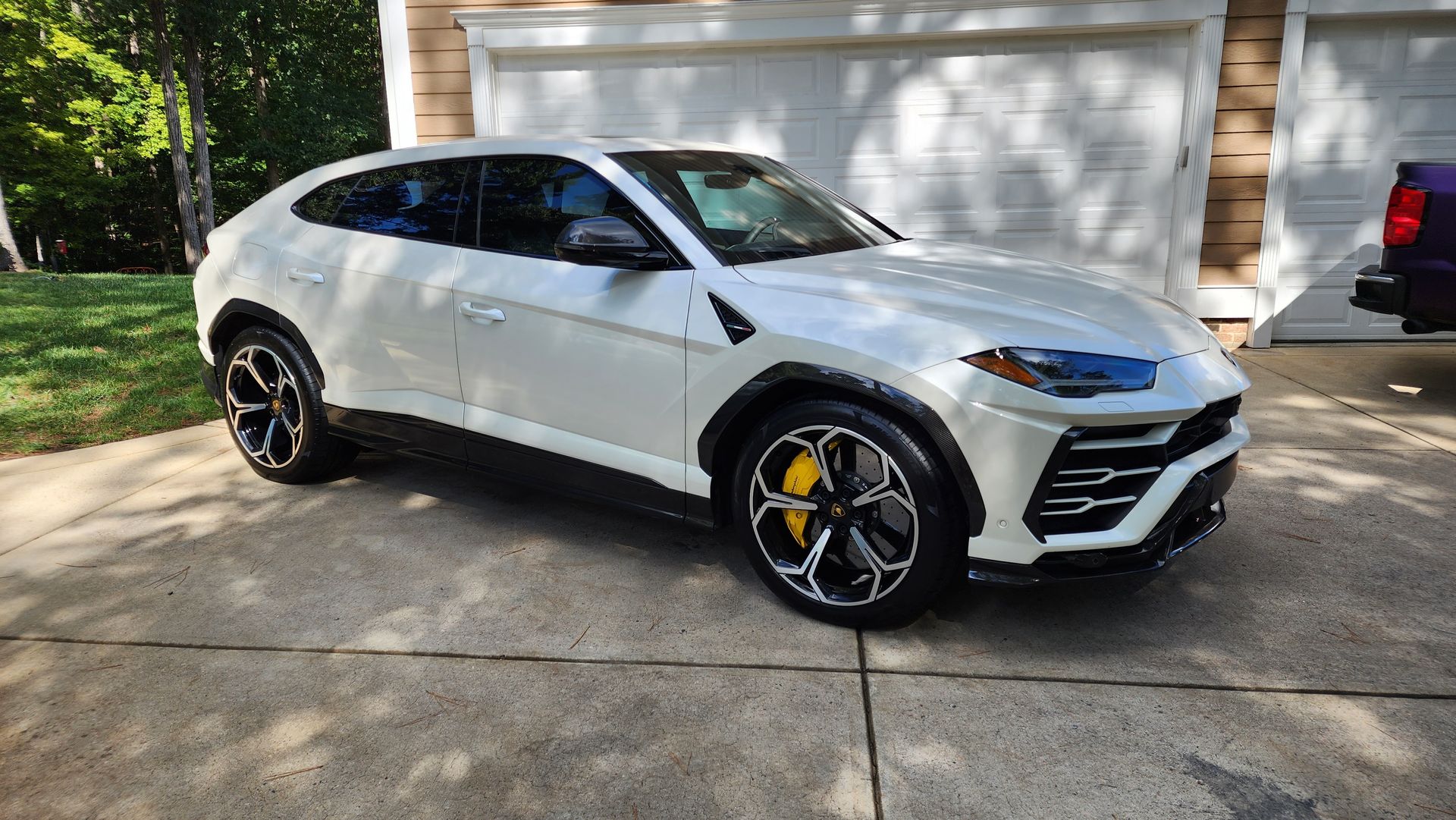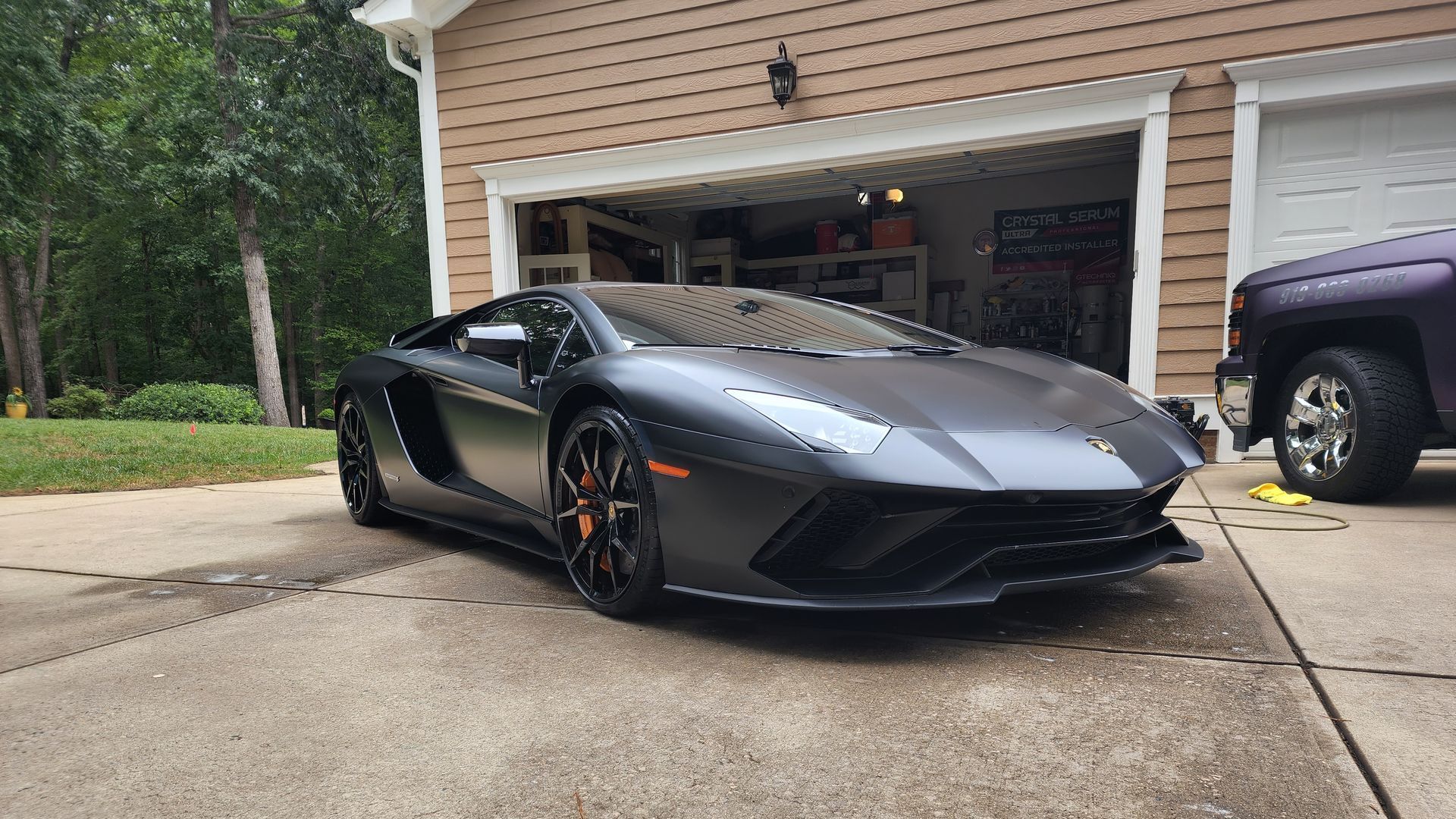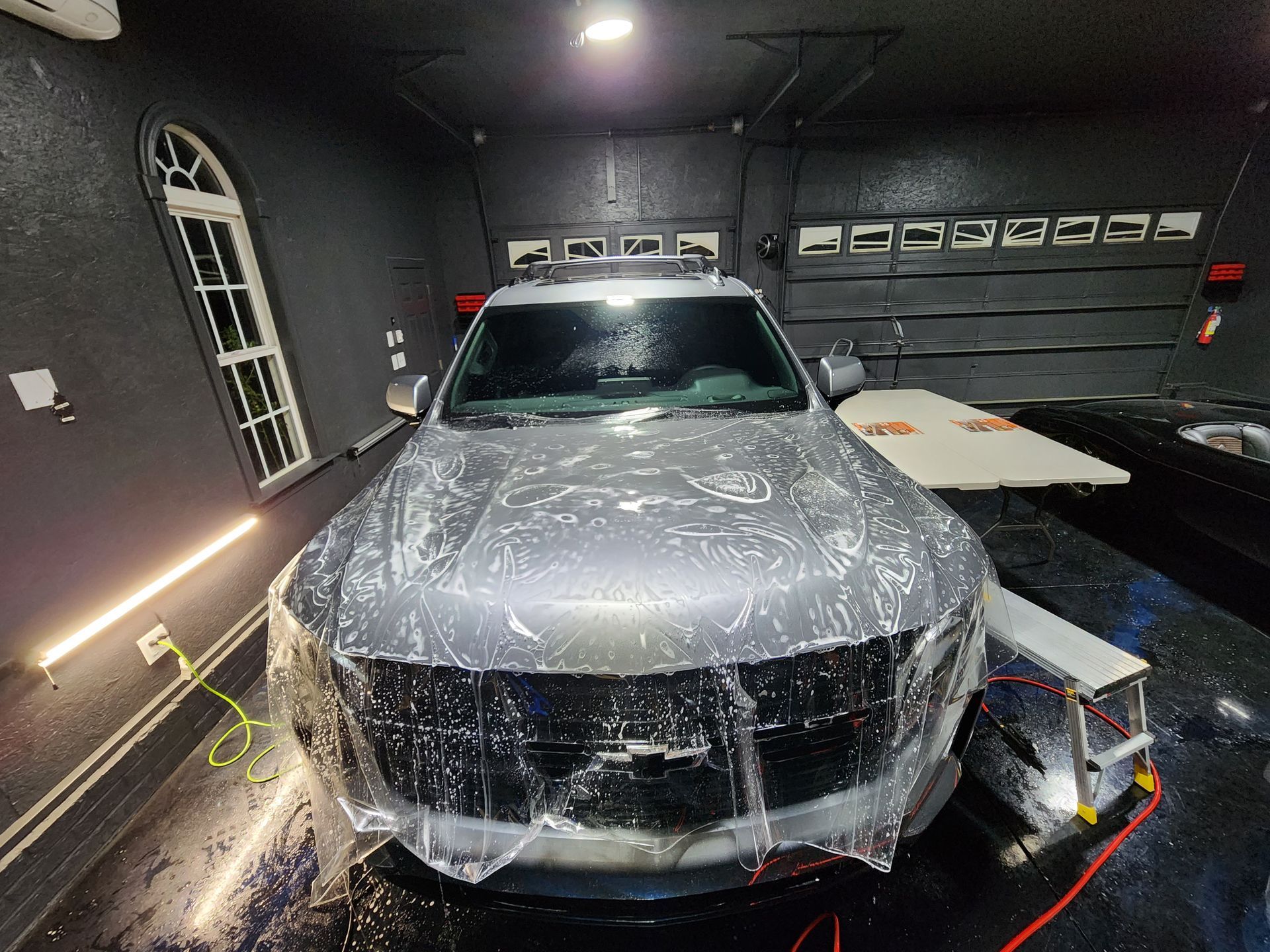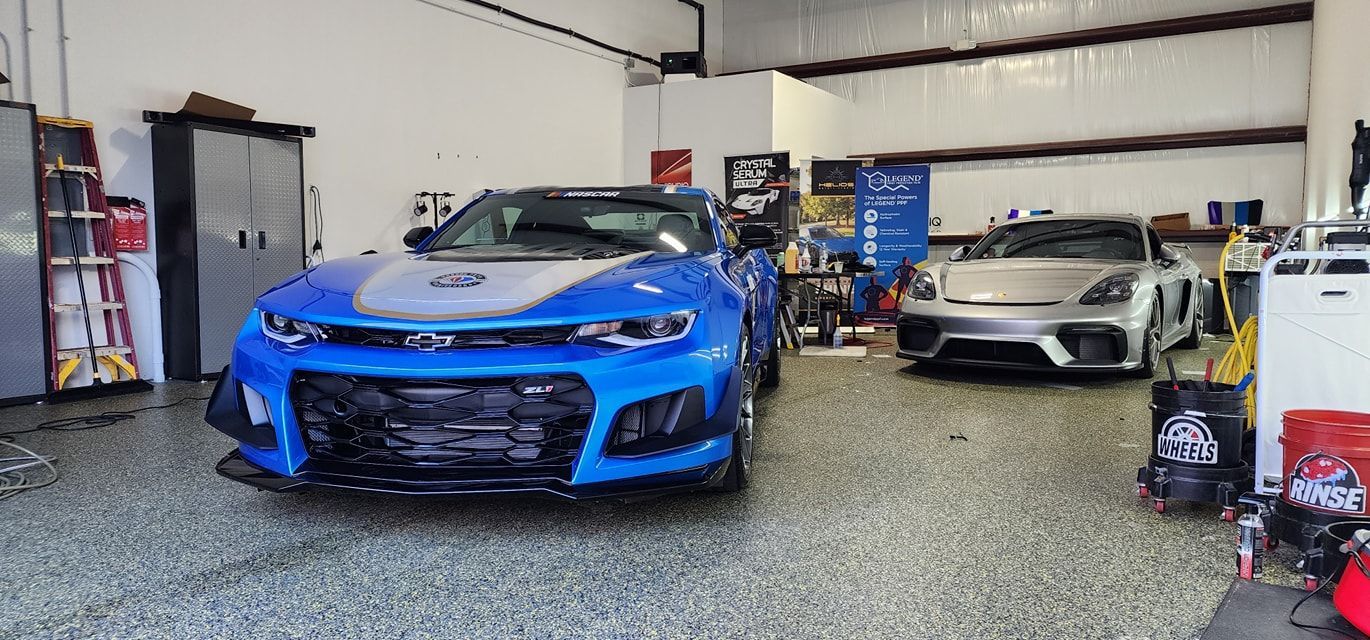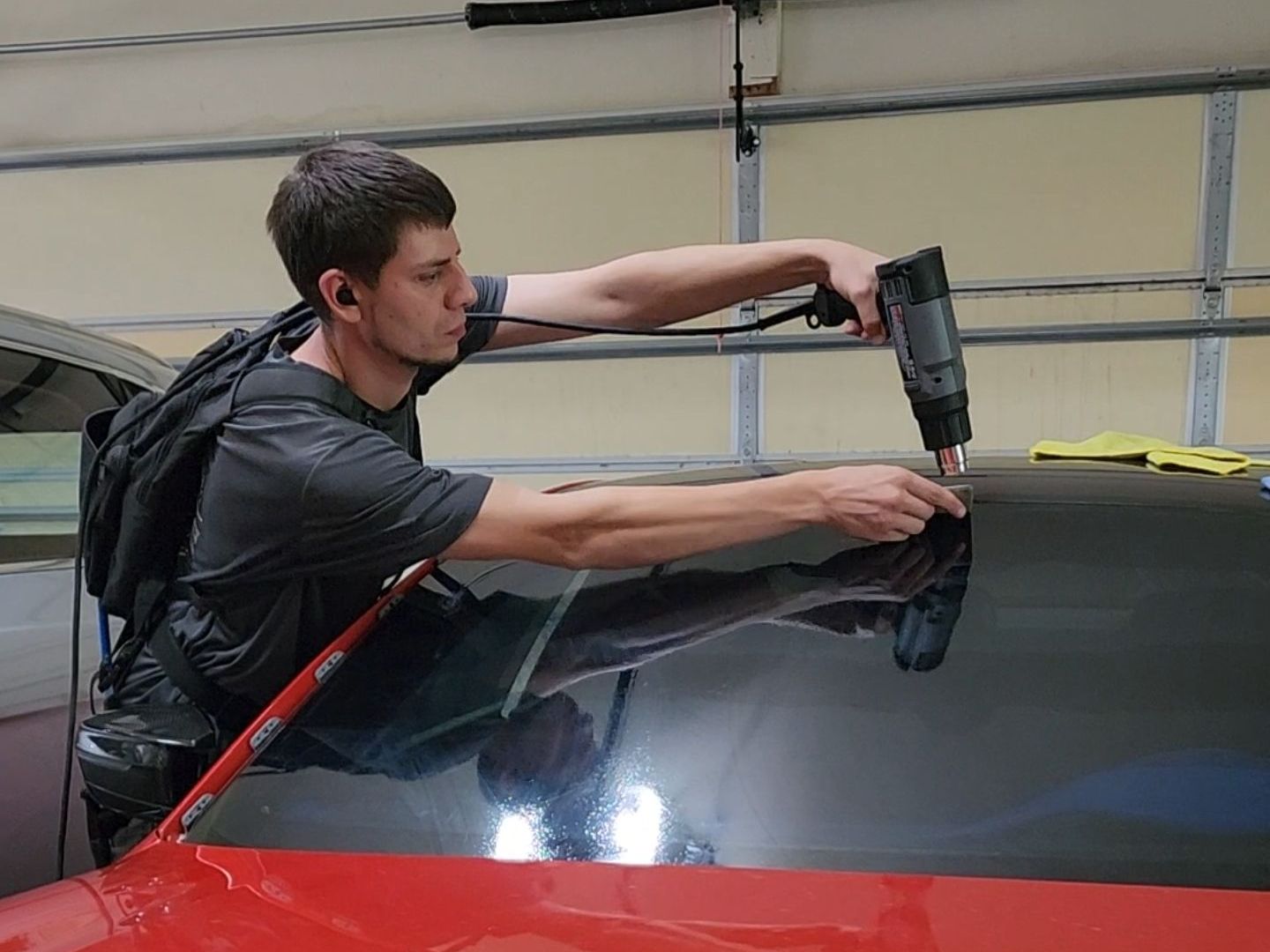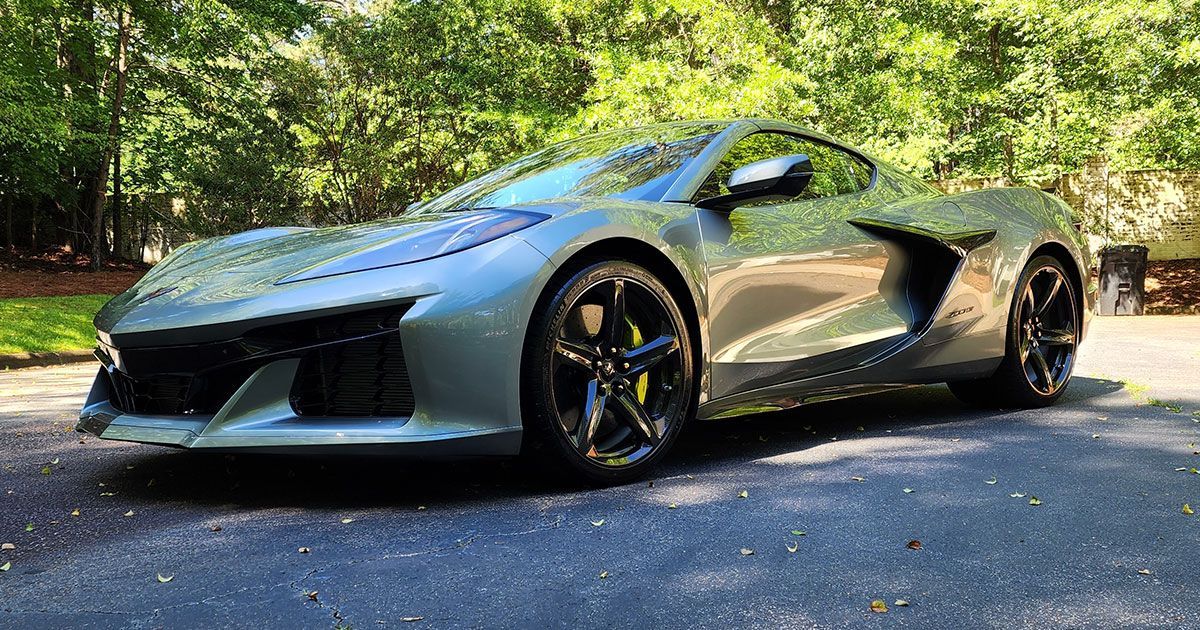What is PPF? Understanding How It Safeguards Your Vehicle
When considering how to best protect your vehicle, you may think of enclosed parking or cautious driving to prevent surface damage. However, an advanced and nearly invisible solution exists that offers continuous protection: paint protection film. This cutting-edge technology serves as a transparent barrier, shielding your vehicle’s paint from everyday hazards such as rock chips, road debris, and ultraviolet exposure. Designed to preserve both the integrity and appearance of your car, PPF has become a preferred choice for discerning vehicle owners.
Paint protection film is a transparent, durable film applied to your vehicle's exterior surfaces to protect against scratches, rock chips, and environmental hazards. By providing a protective barrier, PPF helps maintain the appearance of your vehicle's paint while enhancing its longevity, allowing owners to preserve their investment over time.
What is Paint Protection Film?
Paint protection film is a remarkable advancement in automotive care, designed as a transparent layer of polyurethane that you can apply to your vehicle's exterior. Think of this special film as an invisible armor for your valuable vehicle, providing a robust shield against various physical threats. It protects the paintwork from damage caused by road debris, stones, or even the occasional careless grocery cart that likes to wander into your car's path. PPF was originally developed for military applications, specifically to guard helicopter rotor blades from environmental wear and tear. Over time, its effectiveness caught the attention of car enthusiasts and manufacturers alike, leading to its widespread adoption in the automotive world. Today, you're likely to see shiny, immaculate vehicles cruising down the street sporting a coat of PPF due to its compelling protective qualities. The film helps ward off scratches and chips and plays an essential role in preserving the vehicle’s aesthetic appeal. Maintaining that showroom shine is no small task, particularly in our increasingly hostile world filled with unseen hazards. By investing in PPF, you're not just protecting your car; you're ensuring it stays looking fresh for years to come.
Key Features and Benefits
A high-quality PPF typically lasts between 5 and 10 years, depending on factors like environmental exposure and maintenance practices. Imagine being able to drive without constantly worrying about unsightly scratches ruining the look of your vehicle—this peace of mind is exactly what PPF provides. Additionally, modern formulations of PPF often include self-healing properties. Minor scratches can actually disappear when exposed to heat, whether from sunlight or hot water! It's like having a defense mechanism that works behind the scenes. Just think how satisfying it would feel to know that routine wear can essentially recover on its own.
Furthermore, PPF blocks harmful UV rays, which prevents paint fading and oxidation over time—a crucial factor if you're seeking to preserve both appearance and value. Car enthusiasts frequently note that their vehicles retain higher resale value when protected by PPF because they exhibit less wear and tear than untreated vehicles. Investing in paint protection film is more than just a choice—it's an investment in your vehicle's future.
Key Benefits of PPF
One of the key benefits of paint protection film is its remarkable ability to keep a vehicle’s paint looking new and untarnished. When this transparent shield is properly applied, users frequently note that their cars remain largely free from minor scratches, rock chips, and other unsightly blemishes, including etching caused by bird droppings or splattered bugs. Imagine driving through the urban jungle or a scenic countryside without worrying about those pesky environmental factors damaging your beloved car’s exterior! Vehicles adorned with PPF witness fewer paint chips over a five-year period compared to those without such protective measures. This statistic showcases just how effective PPF can be in preserving the aesthetic condition of your vehicle. Another standout advantage of PPF is its UV resistance, which helps protect a car's paint from harmful sun rays. Over time, exposure to the sun can lead to fading and oxidation, which detracts from both appearance and resale value. PPF acts as a barrier, significantly reducing the effects of UV rays on your vehicle’s finish.
Adding to this benefit, many premium-quality films offer self-healing properties—a marvel of modern technology. When exposed to heat, minor abrasions and swirl marks can disappear as if by magic, leaving the surface smooth and scratch-free. Picture it like this: your car gets into a minor fender bender with a rogue shopping cart; instead of stressing about the scratch that you thought would mar its beauty forever, you simply let the sun work its magic, leaving no trace behind. It’s like having an invisible guardian for your paintwork! Moving forward, one more crucial aspect is the financial investment in PPF itself. While some may view it as an expensive luxury item initially—installation costs can range from $1,500 to over $8,000 depending on coverage type—this protection often leads to long-term savings. Not only does it preserve the paint and maintain aesthetic appeal but studies have shown that vehicles equipped with PPF can command higher resale values, potentially increasing by 15% compared to unprotected counterparts. With such profound advantages as protecting against damage while enhancing resale value, understanding these benefits enables vehicle owners to make informed choices about safeguarding their investments effectively.
Application Methods: Professional vs. DIY
When weighing your options for applying paint protection film, understanding the nuances between professional installation and a DIY approach is essential. Professional installations guarantee a level of precision and expertise that can result in a flawless application. Seasoned installers possess the required skills to navigate complex curves and edges of a vehicle, ensuring that the film adheres correctly without unsightly bubbles or creases. However, this high-quality service does come with a price tag; you can expect to pay anywhere from $1,500 for partial coverage to more than $8,000 for a complete wrap, depending on various factors such as vehicle size and film quality.
On the other hand, DIY kits have surged in popularity recently due to their affordability. With initial costs starting as low as $200, these kits appeal to car enthusiasts seeking cost-effective solutions. While this option may seem appealing for budget-conscious individuals, it's crucial to approach it with caution; the quality of self-installed PPF can vary significantly based on your experience and attention to detail.
Longevity and Durability
The longevity of PPF can indeed be remarkable. High-quality films typically last between 5 and 10 years, but this estimate hinges on several factors. Just like your car itself, the way you treat your PPF directly affects how long it will serve its purpose. Harsh sunlight exposure can slowly deteriorate film, causing it to fade and lose its effectiveness over time. Similarly, abrasive cleaning techniques could scratch or damage the surface of the film, leading to premature deterioration. Maintenance plays a crucial role in maximizing the lifespan of your PPF, allowing it to continue protecting your investment effectively.
Regular upkeep is non-negotiable when it comes to sustaining the film's integrity. For instance, instead of using heavy-duty cleaners designed for tough stains, opt for gentle soap solutions that will clean without harming your PPF. It’s like treating a delicate fabric; the right approach makes all the difference in how well it holds up against the elements. Instead of running through a traditional car wash with harsh brushes that can scratch the surface, consider engaging in gentle hand washing at home. This simple adjustment not only preserves the film but also allows you to pay extra attention to those overlooked areas where dirt tends to accumulate. Keeping PPF clean and free from debris simply ensures that your car always looks sharp while also extending the longevity of the protective layer.
Maintenance doesn’t have to be laborious; incorporate these practices into your regular routine. Frequent inspections for any signs of peeling or lifting can allow you to address issues before they escalate into larger problems. If you catch minor issues early, repairs may be simpler and less costly compared to having to replace larger sections of film due to neglect. These small steps add up, ensuring that your paint protection film continues doing what it was designed for: safeguarding your vehicle’s exterior against scratches, chips, and environmental pollutants. As technology advances by 2025, we expect even more efficient PPF options to be available on the market. Anticipate improvements in self-healing properties and enhanced UV protection that bolster durability further. Investing in high-quality PPF now means you'll benefit from these innovations that promise greater resilience.
Comparing PPF and Vinyl Wraps
Often, people tend to confuse paint protection film with vinyl wraps, yet they serve distinct purposes. Consider this: vinyl wraps are the best option if you want your car to stand out or reflect your personal style. They allow for vibrant color changes and intricate graphic designs that give vehicles a fresh look. However, if protecting your investment from scratches and environmental damage is your primary concern, PPF is the ideal choice. Its robust protective qualities far exceed those of vinyl wraps when it comes to dealing with the realities of daily driving. The differences in durability provide a compelling narrative.
Durability Comparison
While vinyl wraps may offer a decent appearance, typically lasting between 3 and 7 years, they simply don't hold up against the challenges faced on the road like PPF does. PPF is designed to endure impacts, resist scratches, and even has self-healing properties in many modern formulations. Such durability means minor abrasions can disappear over time—an impressive feat that vinyl wraps cannot claim. In terms of longevity, PPF usually stays intact for about 7 to 10 years, making it a wiser choice for car enthusiasts who prioritize paint integrity. When weighing options between these materials, consider these key aspects:
- Aesthetic Flexibility: Vinyl wraps come in numerous colors and finishes—glossy, matte, and even satin—giving you more design choices compared to the typically clear finish of PPF.
- Protection Level: PPF provides superior protection against UV rays, rock chips, and environmental elements that can cause paint deterioration.
- Maintenance Needs: Maintaining PPF requires less effort than vinyl wraps since its surface is easier to clean without retaining dirt or grime as much. With vinyl wraps, additional care is needed to maintain their appearance.
Deciding between PPF and vinyl wraps boils down to individual priorities. If you focus on preserving your vehicle’s original beauty while keeping it safe from wear and tear, investing in PPF is likely the better decision. Conversely, if you're prioritizing customization or a new aesthetic appeal, vinyl wraps can adapt beautifully to your creative vision. Each option has its merits; knowing your needs will guide which path to take for your vehicle transformation or protection journey.
Evaluating the Investment: Is PPF Worth It?
The debate surrounding whether investing in paint protection film is worthwhile often centers on its significant cost. Many car owners find themselves pondering if this investment truly pays off. When considering your vehicle, think of PPF as not just a protective layer but as a smart financial decision.
Vehicles equipped with PPF can enhance their resale value by an impressive 15%. This means that while you may spend money initially, you're also safeguarding your investment for future buyers who appreciate a well-maintained vehicle. On the surface, the upfront cost of PPF installation might seem steep, typically ranging from $800 to $5,500 based on the coverage chosen. However, when you break it down—especially compared to the cumulative costs of frequent paint repairs or touch-ups—it starts to make more sense. Regular painting could easily reach upwards of $1,500 per panel, adding up quickly over time. This scenario clearly illustrates that opting for PPF could save you thousands in repair costs during your ownership period. For Tesla owners especially, whose cars often garner attention and scrutiny on the road, there's a strong argument for PPF as an effective cost-saving measure. The film effectively combats road debris and UV damage that threaten your vehicle's aesthetic integrity over time. Moreover, because of the hydrophobic properties of PPF, water and road salt are repelled, thus helping prevent corrosion—a silent killer of vehicle life.
While initially expensive, PPF delivers long-term benefits that make it a valuable investment for many car owners looking to protect their prized possessions. Look beyond just aesthetics; think of it as protection and an investment strategy rolled into one smart choice. In summary, paint protection film not only safeguards your vehicle but also enhances its resale potential, making it a wise financial choice for conscientious owners.
Precision PPF in Wake Forest, NC
At Helios Detail Studio, protecting your vehicle isn’t just a service—it’s a commitment to lasting excellence. Our premium paint protection film installation in Wake Forest, NC, offers the ultimate defense against chips, scratches, and road debris while maintaining your car’s flawless finish. With expert craftsmanship and industry-leading materials, we help you preserve both the beauty and value of your investment. Schedule your consultation today and experience the confidence that comes with driving a protected vehicle!
